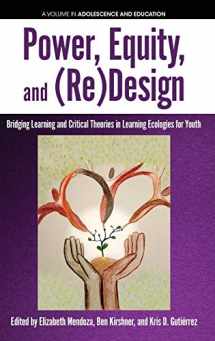
Power, Equity and (Re)Design: Bridging Learning and Critical Theories in Learning Ecologies for Youth (Adolescence and Education)
Book details
Summary
Description
"This volume brings together design thinking, critical social theory, and learning sciences to describe promising learning innovations that foster rights, dignity, and social justice for youth. Each of the chapters provides a case study of a project and discusses underlying theories and behind-the-scenes accounts of implementation and lessons learned. The group of contributors represent emerging scholars who are leading voices working at the intersections of theory and practice for educational equity. Chapters in this volume take up themes of power and equity in the design and redesign of learning opportunities for young people. The chapters show variation in the kinds of learning--from complex ecologies spanning multiple institutions and age groups to specific classroom or after-school spaces. Chapters also vary in the focal ages of participants. Although most discuss experiences of young people between the ages of 12-25, some also explore the learning of elementary age youth. All of the chapters make the authors--who were researchers, designers, teachers, and facilitators--part of the narrative and process of learning. We are especially thankful that the authors of these chapters invite the reader into their thinking process and the tensions and contradictions that emerged as they sought to catalyze transformative learning spaces"--


We would LOVE it if you could help us and other readers by reviewing the book
Book review



